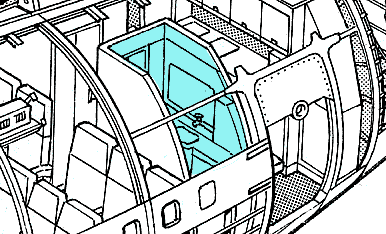
Water and Waste
Passengers rarely contemplate this system unless they are visiting the area of the plane highlighted here, the lavatory. Airplane toilets do not use water to flush, as water-based toilet systems require plumbing that is too bulky for an aircraft, and the motion of the plane could cause water to splash out of the bowl. Instead, a vacuum beneath the toilet sucks waste through narrow pipes into a holding tank below, which is emptied upon landing through an outlet under the fuselage. The 737-800 does carry 30 gallons of potable water in an insulated holding tank behind its rear cargo hold; the water serves the sinks in the lavatories and in the plane's two galleys.
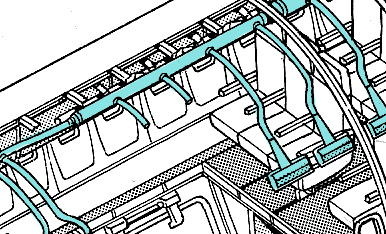
Air Conditioning and Pressurization
The air system on the 737-800 provides a comfortable environment at cruising altitudes of up to 40,000 feet. At such heights, the air must be pressurized for passengers and crew to breathe normally. The air system also controls air flow, filtration, and temperature on board. Many passengers think of cabin air as stale and stuffy, but the quality of air on most jets—which includes fresh air drawn from outside the plane every two to three minutes—is probably better than in most public indoor spaces. Fresh air entering the plane via the engines gets mixed with vented air from the cabin in a space beneath the floors. Forced through hospital-quality filters that can trap odors and up to 99 percent of airborne microbes, the air is then returned to the cabin via overhead ducts like those shown here.
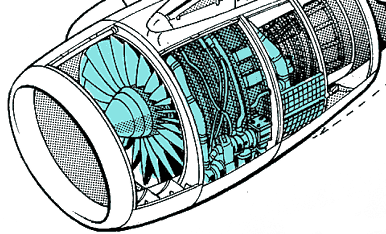
Powerplant
Along with the wings, the engines—also known as the powerplant—are the most important elements in an airplane's ability to get and stay airborne. The 737-800's pair of wing-mounted turbofan engines can deliver an average of 20,000 pounds of thrust with their titanium blades and are relatively fuel-efficient and quiet, like many modern jetliner engines. Unlike the turbojet engines of older planes, a turbofan engine uses only a small portion of the air that passes through it for combustion. The rest of the air entering the engine's fan is discharged "cold," without mixing with fuel and undergoing combustion.
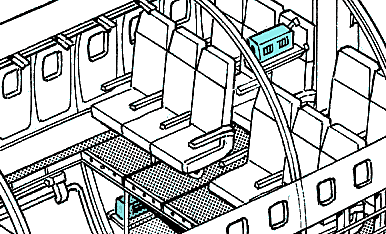
Emergency
Many different aircraft systems play a role during emergencies, responding to potential fire and smoke, operating oxygen masks, lighting exits, and inflating escape chutes, for example. Among the most important components in this category are the cockpit voice recorder (CVR) and the flight data recorder (FDR), seen above. All commercial aircraft carry two "black boxes" (they are actually painted orange), which record information during a flight that, in the case of an incident or accident, can help investigators reconstruct precursor events. The CVR records conversation, radio transmissions, and other noises in the cockpit, while the FDR collects data on the plane's operation, such as its altitude and flight control positions. Both recorders are stored aft, the area that usually survives a crash most intact.
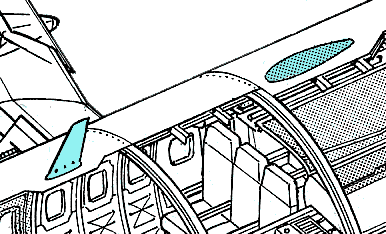
Communication
Modern jetliners bristle with complex communications equipment, allowing the crew to keep in touch with what's happening elsewhere in the air and on the ground. The 737-800 sports no fewer than 21 different communication antennae mounted on its fuselage, such as the two shown here, an Ultra High Frequency antenna (left), which transmits radio signals, and the Automatic Direction Antenna (right), a homing device that keys on to navigational signals beamed up from ground-based beacons. Other specialized antennae monitor weather, localize the plane to different antennae as it changes course, and lock on to receivers on runways as the jet approaches an airport.
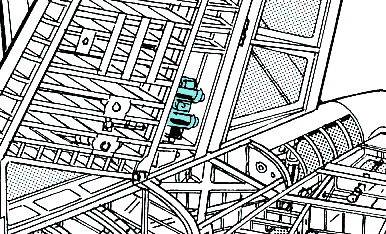
Hydraulics
A network of tubes distributed throughout the jetliner contains pressurized liquid that, through hydraulics, powers the retraction and extension of landing gear, the opening and closing of exterior doors and hatches, and the movements of flight controls such as the rudder and elevators served by the hydraulic actuator seen here. Hydraulic power is extremely responsive, forceful, and reliable, far more so than electric power. It is also easily maintained and does not pose a fire hazard, making it ideal for use on airplanes.
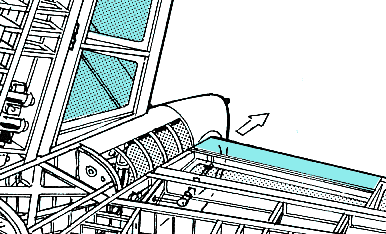
Flight Controls
Even though this 20-ton airplane courses through the air at a typical cruising speed of 530 miles per hour, passengers barely feel it maneuvering, if at all. A collection of highly tooled mobile parts on a jetliner's exterior—flaps, slats, ailerons, rudders, elevators, and spoilers—keep its movements smooth and precise. Pilots choreograph the actions of these flight controls to make the aircraft climb, turn, decelerate, and descend. In the detail above, portions of the plane's rudder, a vertical surface hinged to the tail fin, and its port elevator, a horizontal surface hinged to the back of the tailplane, are visible. The rudder controls the plane's yaw, or side-to-side swiveling movement, and the starboard and port elevators control its climb and descent. Flaps, slats, ailerons, and spoilers are located on the airplane's wings.
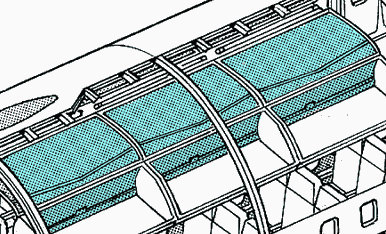
Electrics
There are approximately 36.6 miles of electrical wire tucked behind the paneling of the 737-800. It carries electricity from three or more generators attached to each engine's compressor. During flight, everything from the above-seat control panels (seen here) and the cockpit's instrument displays to the tiny tail navigation light receives power from engine-driven currents. On the ground, with the engines off, a turbine-driven auxiliary power unit (APU) in the tail section provides electricity and powers the air conditioning. If one or both engines fail in flight, the electrical generators and the APU—normally off while in the air—can shoulder the burden, allowing the plane's electrics to continue functioning. If all else fails, jetliners also have emergency batteries that will take over and power the cockpit.
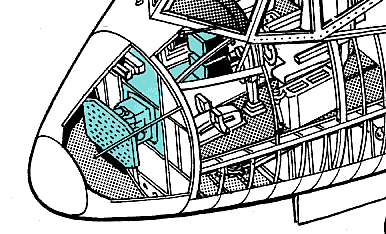
Avionics and Instruments
A jetliner's avionics system includes a wide range of state-of-the-art technology for navigation and operation of the aircraft, such as a Global Positioning System, autopilot, radar, and weather-sensing tools. In addition to the traditional instrument panels located above and in front of the pilots, the 737-800 features a sophisticated system called a Head-Up Display (HUD), a transparent glass instrument screen positioned in between the pilots' eyes and the flight deck window. The HUD shows vital computer-generated information such as airspeed, altitude, and flight path throughout a trip. During takeoffs and landings, the HUD superimposes an image of the runway over the pilots' actual view out the window, eliminating the need for them to look anywhere but straight ahead to get instrument readings.
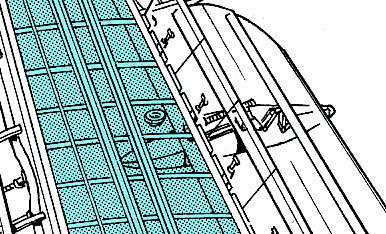
Fuel
The 737-800 has a maximum fuel capacity of 6,875 gallons, which it carries in fuel tanks in its wings, as seen here, and in a fuel tank located underneath the passenger cabin's midsection. Fully loaded, the jet can fly up to 3,159 miles without refueling. In 2005, Boeing expects to start flight tests with a hybrid jetliner that would operate on a fuel cell while powering up and down on the runway and when back-up power is needed in the air. If fuel-cell technology existed in a jet like the 737, each aircraft would conserve thousands of gallons of fuel every year.
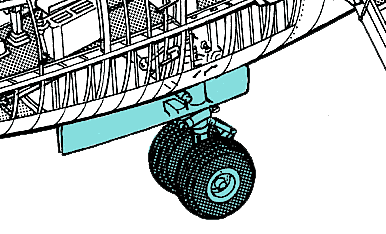
Landing Gear
Though together they're called landing gear, an airplane's wheels and struts are as critical for taxiing and takeoff, of course, as for landing. Operated hydraulically (or manually in case of hydraulic failure), the landing gear is retracted during flight, as the amount of drag at cruising speeds would otherwise tear it from the plane. The 737-800 has three pairs of wheels, one at the nose of the plane and two at its rear with their own set of brakes controlled by pedals in the cockpit. The landing gear's flexible struts absorb much of the shock of touchdown, sparing the wheels during repeated landings.
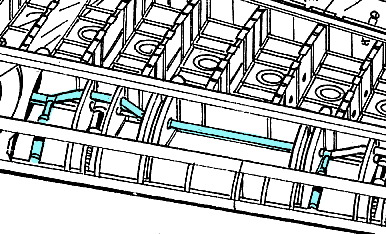
De-Icing and Anti-Icing
Even small amounts of ice on a jetliner's airframe or wings can reduce its lift and hinder the flight crew's ability to control the aircraft, so removal (de-icing) and prevention (anti-icing) of frost, ice, or snow accumulation on the airplane is critical. Many passengers are familiar with ground de-icing and anti-icing procedures, in which runway technicians spray aircraft about to take off with chemicals that remove and prevent ice in cold weather. During flight, hot air from the plane's engines deices the wings.

|

|













